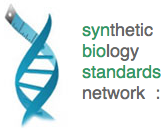We have included practical details from our expreience, which may be helpful for those who are setting up something similar.
Everyday
Lab coats
4 x boxes of purple nitrile gloves: extra large, large, medium small (box/100)
22 x safety glasses
4 x double waste bags for autoclaving (end of bench in white tubs)
11 x Waste tip pots and plastic sleeves
11 sets micropipettes P20, P200, P1000
6 x 0.1-10ul tips sterile (share one box 2 groups)
6 x 10-200ul tips sterile
6 x 200-1000ul tips sterile
70% ethanol (for spills)
trigene
scissors
Day 1 - PCR
PCR machines (G-storm GS1 (on loan from GRI) and Quanta biotech Q-cycler II (on loan from Labtech))
Thin walled 50ul PCR tubes (12 per pot)
11 x Gibson master mix aliquoted
11 x template DNAs aliquoted
11 x primers
2 x Qiagen gel extraction kit (50 rxns) + protocol
ethanol
11 x ice buckets and ice machine
4 x MSE Microcentaur microfuges (1 per bench)
Nanodrop ND2000 and PC laptop
Day 2 - Gel Analysis and Purification
Submarine gel electrophoresis units (e.g FisherBrand) x 6 (medium gels/ 8 well combs) two groups per gel
6 x electrophoresis power packs (e.g. EC135-90 )
6 x 1% (w/v) agarose gels (6 x 100ml pre-made plus SYBRsafe DNA dye)
4 x Genie Vortex
TAE running buffer (10 l)
11 x DNA ladder (aliquoted one per group) (e.g. Bioline EasyLadder II, #BIO-33047) Note: supplied with a red dye in a ready-to-use format
11 x Gel Loading Dye, Orange 6x from NEB (20ul aliquoted one per group) (#B7022S)
Gel Loading Dye, Orange (6X) is a pre-mixed loading buffer with a tracking dye for agarose gel electrophoresis. This solution contains SDS, which often results in sharper bands, as some restriction enzymes are known to remain bound to their DNA substrates following cleavage. EDTA is also included to chelate magnesium (up to 10 mM) in enzymatic reactions, thereby stopping the reaction. Orange G will not appear in gel photographs, and runs ahead of all but the smallest restriction fragments. Orange G migrates at approximately 50 bp on a standard 1% TBE agarose gel.
1x Gel Loading Dye, Orange (6X): 2.5 % Ficoll400, 11 mM EDTA, 3.3 mM Tris-HCl, 0.017 % SDS, 0.15 % OrangeG, pH 8.0 @ 25°C. Use 5 µl of Gel Loading Dye, Orange (6X) per 25 µl reaction, or 10 µl per 50 µl reaction. Mix well before loading gel.
The Safe-Imager 2.0 blue light transilluminator (Invitrogen) and Quick reference card.
Heating block 50 degrees C (to melt gel slices)
11 pots x 1.5ml eppendorf tubes (20 per pot)
11 pots x Axygen gel excising tips (6 per pot)
2 x Qiagen Gel extraction kit (50 rxns) + protocol
ethanol
isopropanol
4 x MSE Microcentaur microfuges (1 per bench)
Nanodrop ND2000 linked to a PC laptop
Day 3 - End-linking, Transformation and plating
100 x LA + amp plates (6 per group)
E.cloni competent cells (aliquot one/ group150ul)
Heating block 42 degrees C (for heat shock)
11 pots x 1.5ml eppendorf tubes
Example colonies just in case nothing works!
11 x L-spreaders (Sterilin)
11 x SOC (1ml)
Day 4 - Colony Analysis
96 well plate (sterile)
FLUOStar Optima Plate reader (BMG Labtech)
